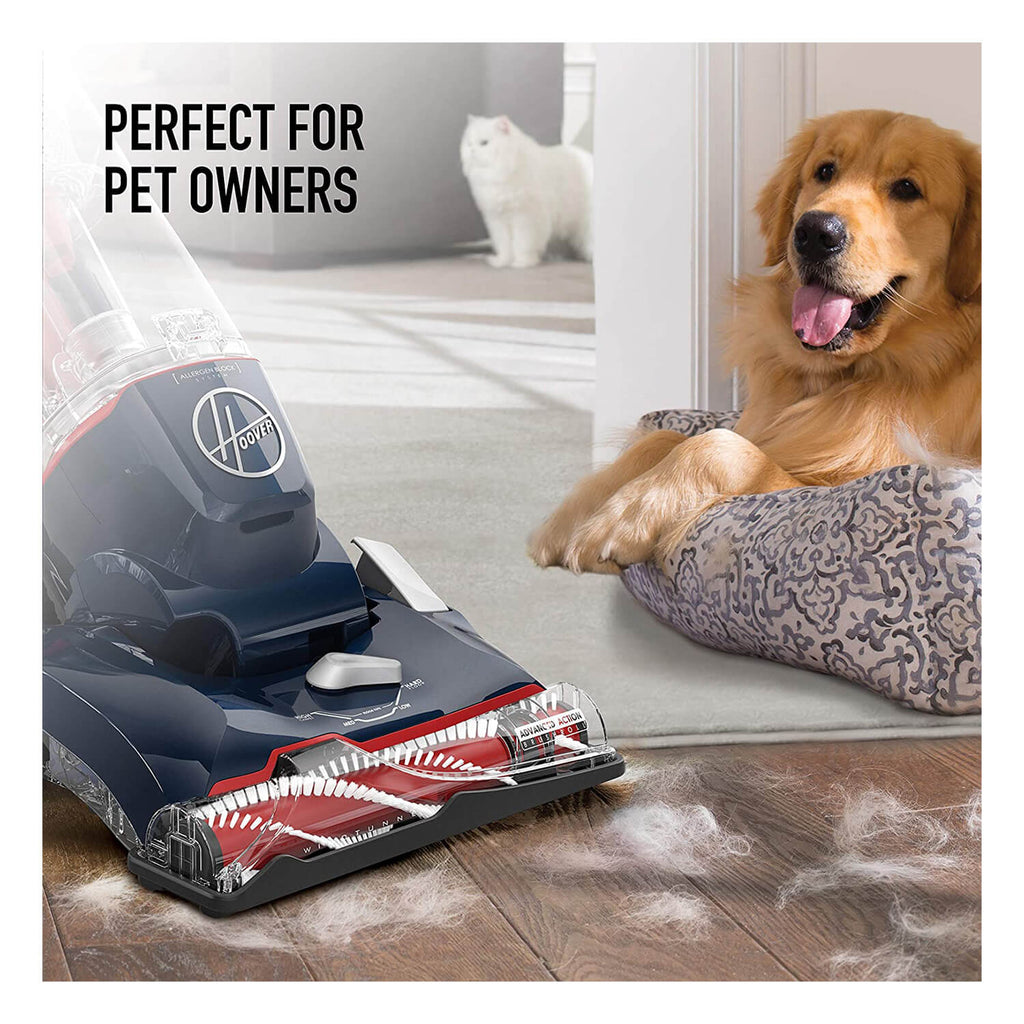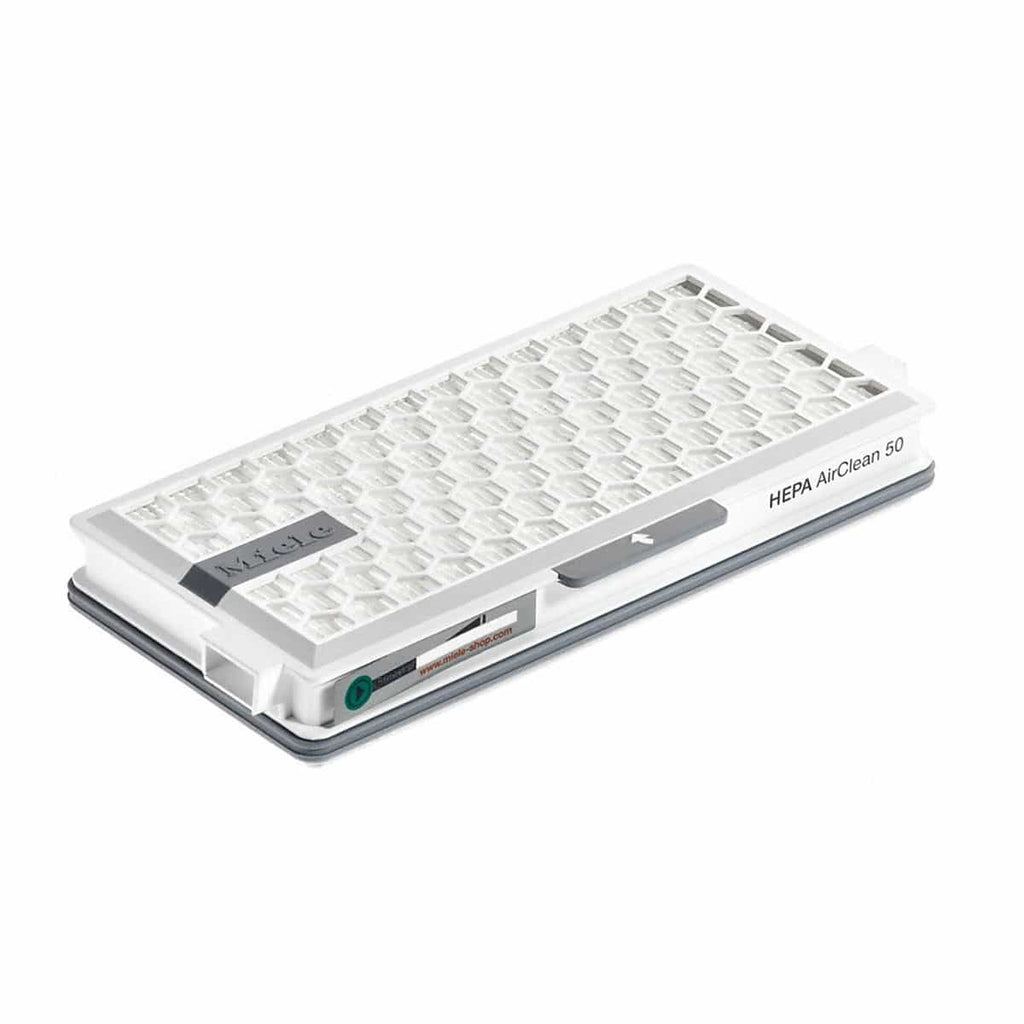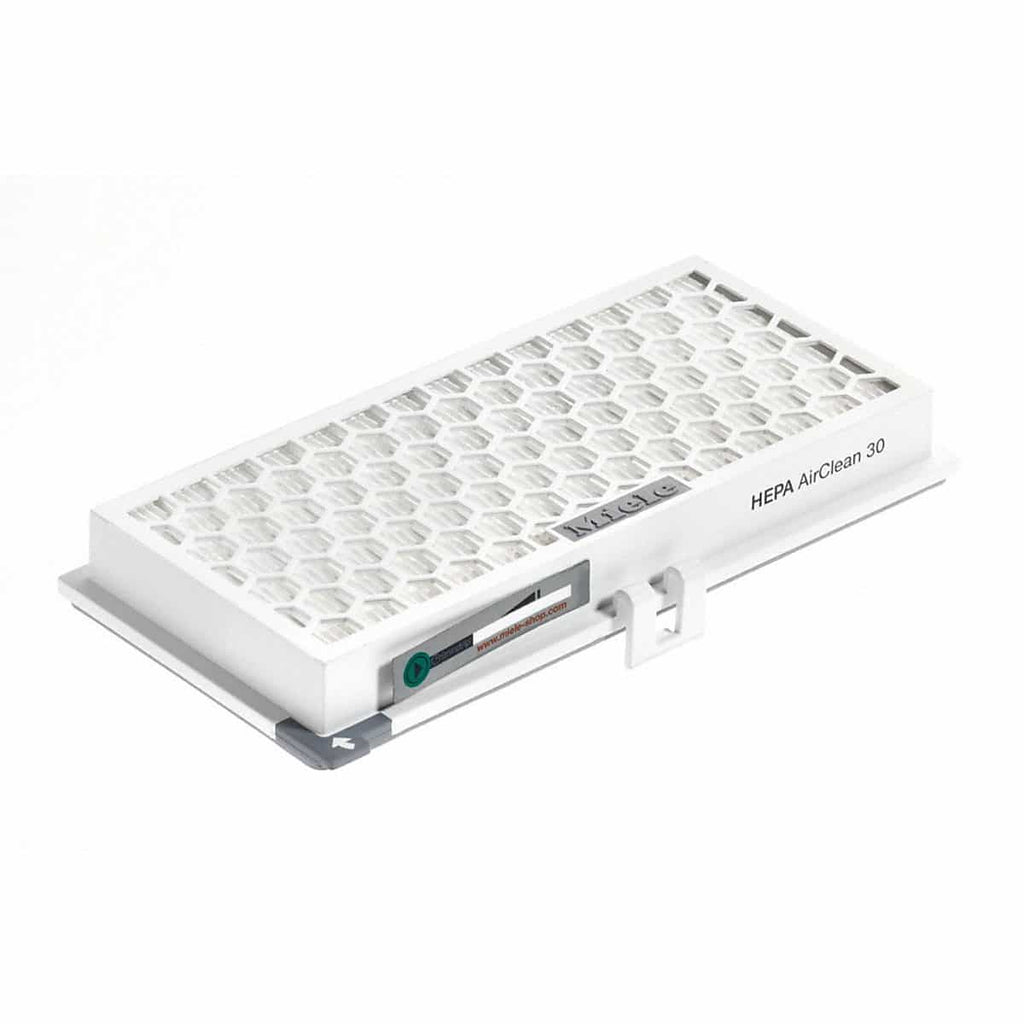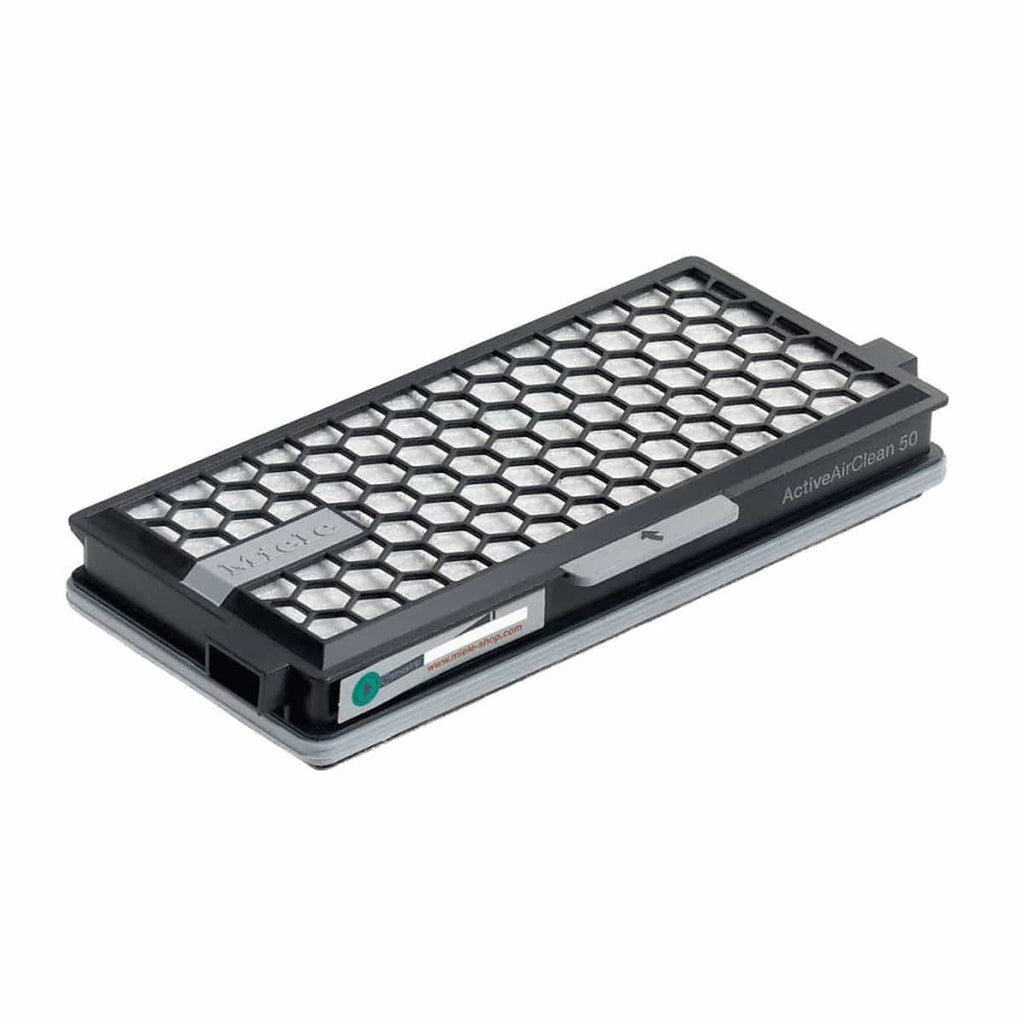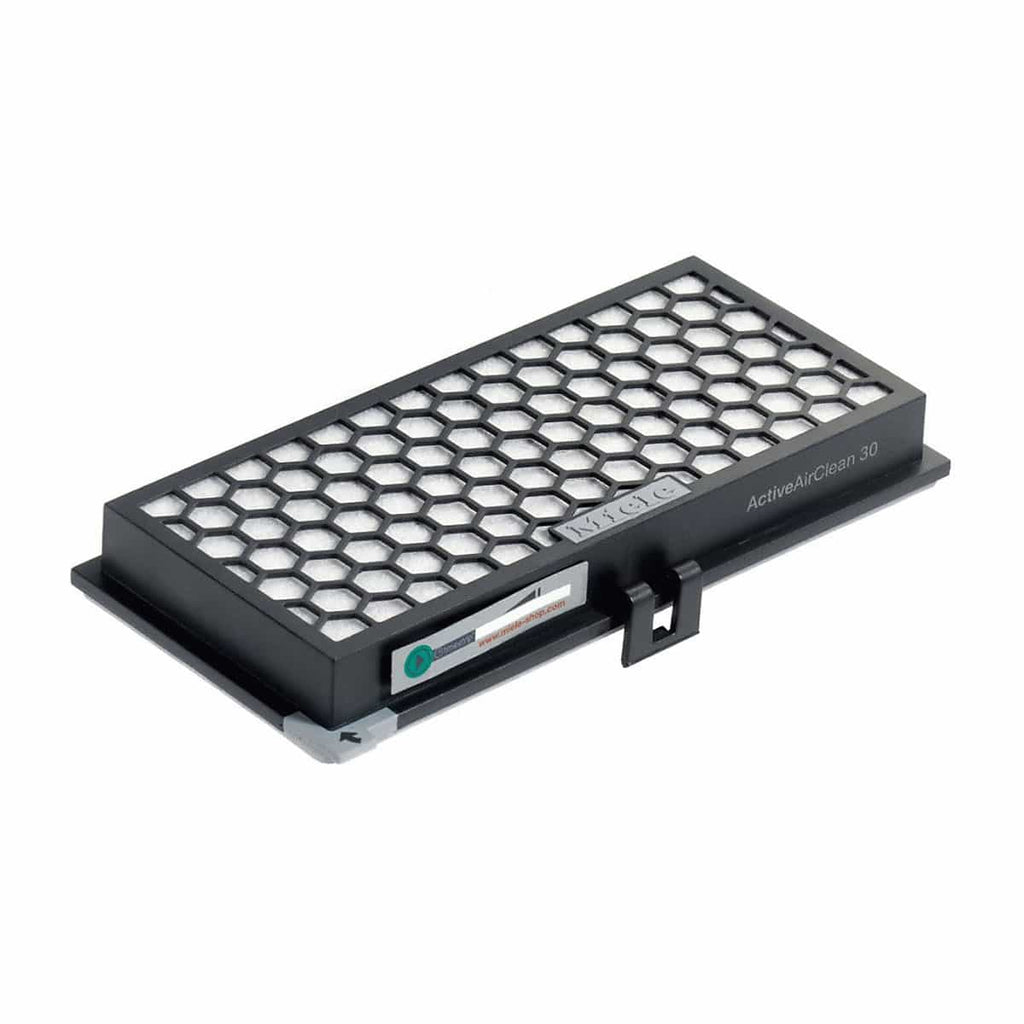Miele Vacuum Filter Comparison: AirClean vs. Active AirClean vs. AirClean HEPA
Posted by DEANA MEDINA
We love Miele vacuum cleaners. Their precision German engineering and generous warranties make them one of the most reputed appliance makers in the world, and if you're an allergy-sufferer, you'll love them too - In fact, the top-rated vacuums for allergy sufferers on Consumer Reports are Miele brand.
All vacuums have some sort of filtration system that prevents particles from being ejected from your vacuum exhaust, but not all vacuum filters are created equal. Miele offers not one, or two, but three different types of vacuum filters to suit your needs:
- AirClean HEPA filter
- Active AirClean filter
- Standard AirClean filter
These options provide you with a lot of versatility, but also lead to some confusion. We're often asked by our customers what the differences are and which is the best to use. So let's roll up our sleeves and dive into the exciting world of vacuum filtration systems.
What's the difference between micro-allergen filters, HEPA filters, and activated charcoal filters?
The vacuum shopping experience can be confusing for many when it comes to filtration systems, particularly if allergies aren't a major issue in your house. It's possible you glossed over the various models, wondering if it was worth shelling out extra for a HEPA filtration system. While all systems are designed to filter out particles, HEPA simply is better at capturing particles, and much smaller ones at that.
A micro-allergen filter is designed to capture 99.5% of particles that are 2 microns in size and above. A High-Efficiency Particulate Air (HEPA) filter, one the other hand, is a medical standard that is graded to be able to capture 99.97% of particles of 0.3 microns and higher, or in some cases 0.2 microns.
These numbers are meaningless without reference, so here's a chart of various allergens and pollutant particle size from Breathe Quality:
|
Particle |
Particle Size (microns) |
|
Atmospheric Dust |
0.001 - 40 |
|
Bacteria |
0.3 - 60 |
|
Beach Sand |
100 - 10000 |
|
Burning Wood |
0.2 - 3 |
|
Cement Dust |
3 - 100 |
|
Clay, fine |
0.5 - 1 |
|
Coal Dust |
1 - 100 |
|
Combustion |
0.01 - 0.1 |
|
Dust Mites |
100 - 300 |
|
Fly Ash |
1 - 1000 |
|
Grain Dusts |
5 - 1000 |
|
Household dust |
0.05 - 100 |
|
Human Hair |
40 - 300 |
|
Insecticide Dusts |
0.5 - 10 |
|
Lead Dust |
0.1 - 0.7 |
|
Mold Spores |
10 - 30 |
|
Pet Dander |
0.5 - 100 |
|
Pollen |
10 - 1000 |
|
Smoke |
0.01 - 0.1 |
|
Tobacco Smoke |
0.01 - 4 |
|
Viruses |
0.005 - 0.3 |
For many, a micro-allergen filter may be a good fit - In fact, a 2009 study by the University of Virginia Asthma and Allergic Diseases Center found that micro-filtration bags can actually relieve allergy symptoms, including the effects of cat dander. But if you're really serious about clean air in your home and kicking allergens to the curb, it's worth investing in HEPA.
As for activated charcoal or activated carbon filters, they're specifically designed to trap smells to help get the stank out of your air. You'll typically find charcoal filters in vacuums that are designed for pet owners, though these filters are also great for other smells such as cigarette smoke, moldy air, you name it.
So Which Miele Filter Should I Buy?
The three Miele filters utilize the different technologies we just unraveled. All filters need to be replaced over time, but can typically be used for 50-60 hours before they conk out. Let's take a closer look at the filters:
Miele Standard AirClean Filter
Formally known as the Super AirClean Filter, this model is an advanced micro-allergen filter that traps 99.95% of particles of 0.5 microns in size, and up to 94% of particles 0.3 microns in size. This model is a great value as it comes CLOSE to meeting the HEPA standard but is slightly more affordable.
Active AirClean Filter
This filter includes the same technology as the Standard AirClean Filter but also has the activated charcoal component to remove odors from your home. This is also the model that comes default in Miele cat and dog vacuum models to remove pet hair odors.
- Shop Miele AA50 Active AirClean Charcoal Filter (fits in S4000, S5000, S6000, S8000, C2 & C3 series Miele canister vacuums)
- Shop Miele AA30 Active Air Clean Charcoal Filter (fits in S2000, S7000, C1, U1 and S300-S899 series Miele vacuums)
AirClean HEPA Filter
Just as the Standard AirClean Filter uses an advanced micro-allergen filter, Miele wasnt content to use a standard HEPA filter. Their H13 HEPA AirClean does not have the charcoal component but is a true particle buster being able to capture 99.95% of particles that are 0.1 microns and larger. Combined with the Miele Sealed System and pre and post-motor filters, Miele vacuums using these filters can actually trap up to 99.99% of particulate matter.
- Shop Miele SF-HA 50 AirClean HEPA Filter (fits in S4000, S5000, S6000, S8000, C2 and C3 series Miele canister vacuums)
- Shop Miele SF-HA 30 AirClean HEPA Filter (fits in S2000, S7000, C1, U1 and older S300-S899 series Miele vacuums)
Looking to Upgrade Your Miele Vacuum?
Here at Vacuum Cleaner Market, we carry all the top Miele Vacuum Cleaners at the best prices, and ship all across the United States. If you're ready to upgrade, we encourage you to shop our online vacuum store, and contact us if you have any questions about each model's features!
SHARE:

